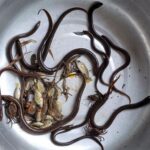The term ‘Bank line’ used in English to refer to a string of poles along a water bank is virtually unknown in Southeast Asia. Instead, this fishing method and its equipment are referred to by different names in the region. In Thailand, it is called รอบแบ่ง (pronounced ‘Raw Baed’); in Cambodia, it is known as សន្តុចបងគៃ (pronounced ‘Santouch Bong Kai’), in Laos, it is called ໄກ່ຂົ້ມ (pronounced ‘Kai Khom’), and in Vietnam, it is referred to as ‘Cần câu múc’.
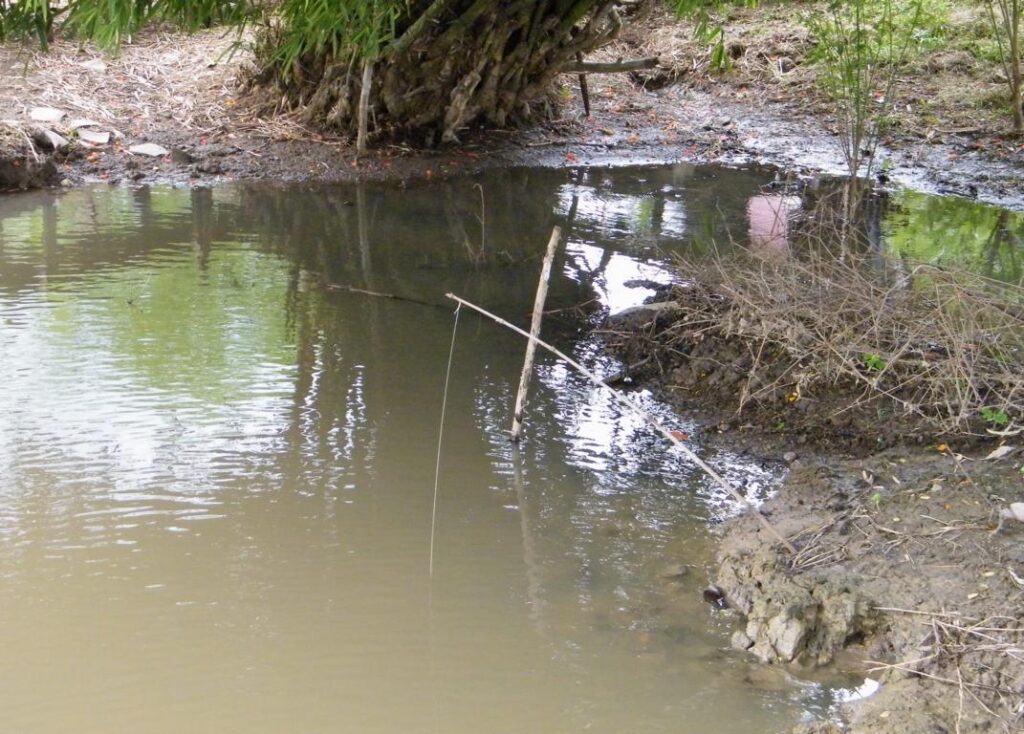
Target fish- and frog species
The primary target fish species for Bank line fishing during wintertime (September to January) are snakehead (Channa striata). Various catfish species are the primary targets during summertime (July to September). However, it’s worth noting that different fish species can be caught on a bank line throughout the year, even during the low fishing season from February to June.
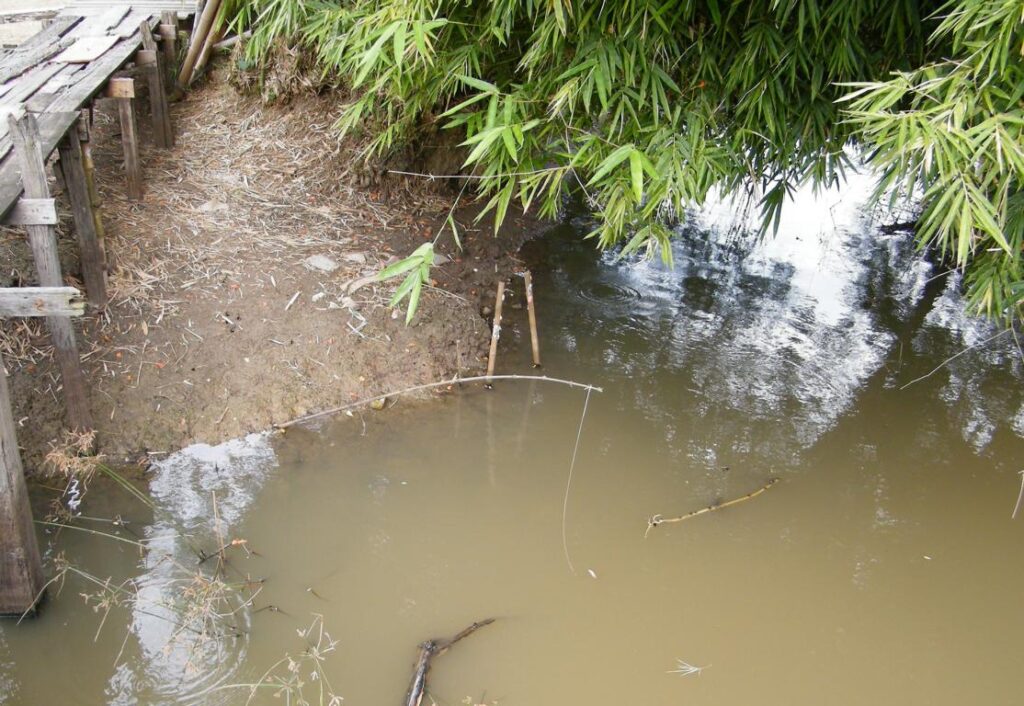
In many areas, large frog species make up a significant portion of the catch on a bank line. The most commonly caught frog species include Crab-eating frogs (Fejervarya cancrivora) and Common Lowland Frogs (Hoplobatrachus rugulosus). These frogs contribute to at least half of the catch numbers in certain regions.
Tackle used

The fishing tackle used for bank line fishing consists of small poles, each equipped with a fixed line and a single hook. A passive bank line setup typically includes 20 to 80 poles set consecutively.

The poles are crafted from split bamboo, with a slight downward bend on the thinner end. They usually measure between 65 to 120 cm (approximately 2 to 4 ft) in length, with a diameter of 6 to 9 mm (0.23 to 0.35 inches). The lines attached to the poles are braided, and their free length is approximately 40% of their total length. A single hook, usually in size 12 or 13, is securely fixed at the other end of the line. When not in use, a cotton band keeps the hooks in place.
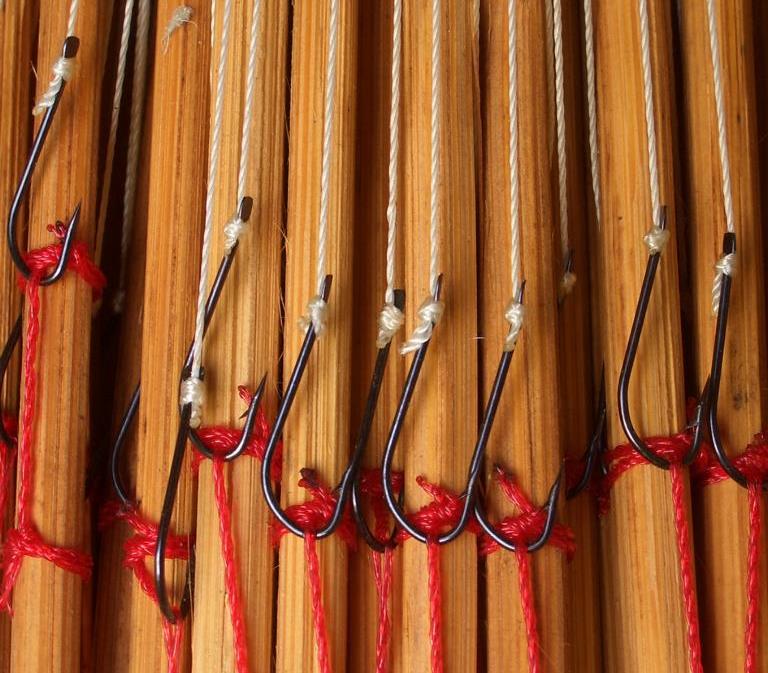
Country stores sell ready-made bundles of 50 or 100 pieces of fishing poles. However, due to financial limitations, many villagers construct their fishing implements using locally available materials such as bamboo stalks, Tonkin grass, or flexible wooden twigs. For the fishing lines, any accessible string material and commercially available fishing hooks can be used.
In addition to the fishing tackle, a closed holding basket must be brought to store the caught fish and frogs. Bait, such as froglets and other types of bait, is often kept in a separate compartment within the holding basket, which is enclosed with netting. Lastly, a headlamp, light source, or lantern is essential for visibility during fishing activities.
Bait used
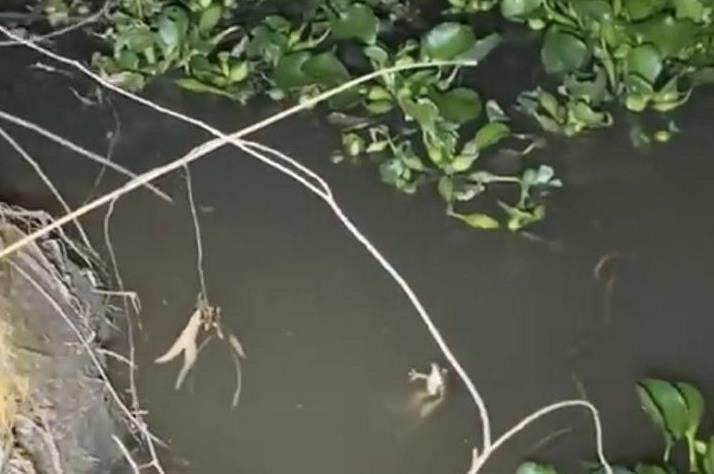
The choice of bait for bank line fishing depends on the specific target fish species. When targeting snakeheads, the prime bait is small froglets hooked through the mouth. These bait froglets are highly effective and eagerly consumed by larger frogs.
.
.
.
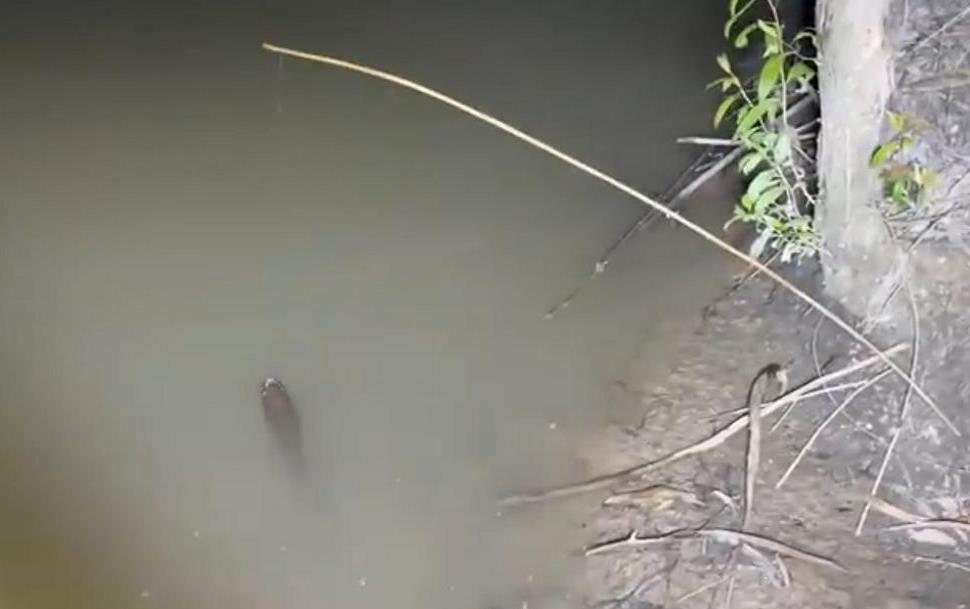
Several bait options can be utilized for catfish. Shrimp, fish fry, earthworms, or water snail meat are commonly used. For live baiting, preferred fish fry options include species such as Clarias (walking catfish) and climbing perches.
.
.
Fishing technique
The bank poles are gathered in the afternoon, and the bait is prepared. Later in the afternoon, the poles will be baited and positioned approximately 3 meters apart along the water’s edge. They will be firmly inserted at an inclined angle into the muddy bank. Depending on the abundance of fish and frogs in the area, the bank line will be left overnight and regularly checked and re-baited throughout the night. The bait should be suspended about 10 cm / 4″ below the water’s surface when targeting catfish. When targeting snakeheads, the bait should consist of froglets or small fish placed directly on the water’s surface.
Lessons learned about bank line fishing:
- Establishing a bank line is an uncomplicated and efficient technique for capturing fish and frogs.
- Fishing lines can be replaced with self-made strings crafted from plant fibers.
- Commercially available hooks can be utilized, although they can be substituted with homemade hooks made from natural materials.
- Flexible poles made from bamboo or Tonkin grass are readily accessible across South-East Asia.
- Optimal bait options include small frogs, live fry from resilient fish species, and crushed water snails.
.


